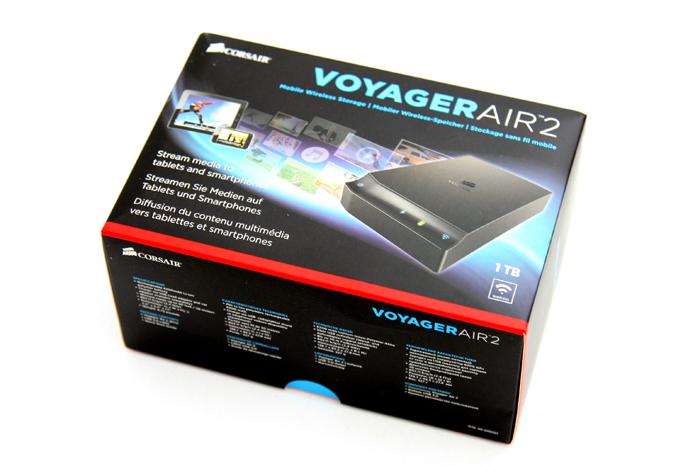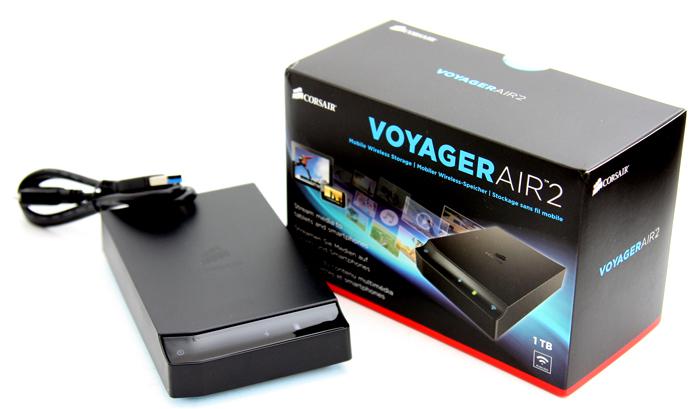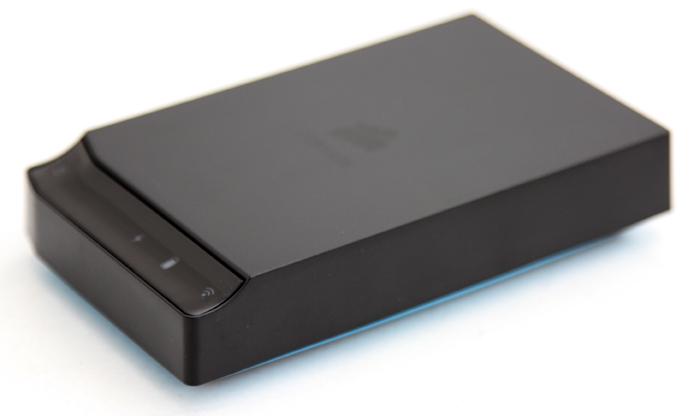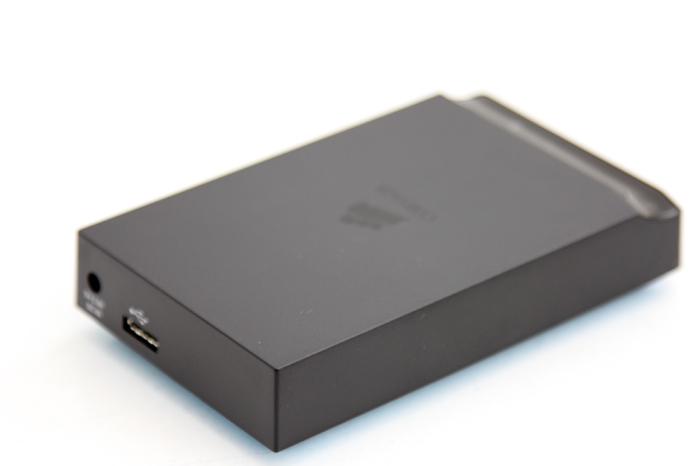Product Showcase
Product Showcase
Corsair has sent us their black version of the Voyager Air 2. Our particular sample is a 1TB storage unit that can be connected via USB (2.0/3.0) and 802.11n/g/n WIFI, Corsair unfortunately dropped the Ethernet jack.
The Voyager Air 2 from Corsair is a USB 3.0-capable high speed external and includes options for wireless streaming over desktop PC, tablets, and smartphones (Android / iOS app), but if you connect to your USB port (preferably 3.0) that'll work as well. The Voyager Air 2 also supports Airplay, DLNA, and cloud syncing with Corsair’s version 2.0 software. Airplay allows the device to work with AppleTV products, DLNA support means it can work with a variety of Blu-ray players, media-players, and other devices like smart TVs.
Drive contents and media can be shared with everyone simultaneously on your home network. Our initial measurements show that the HDD is rated at roughly 110MB/sec for reads. Sure, that is not comparable with modern age SSD and NAND Flash storage but for its purpose it'll be just fine. Included are a small manual and USB 3.0 cable. You charge the unit through USB.
The design of the unit is a little bulky for portable storage, but the Voyager Air 2 has way more technology embedded as well alongside a powerful lithium power battery. The battery life indicator lights up green if the Voyager Air has more than 75 percent of juice left, amber when it has less than 75 percent, and red when it has less than 5 percent. The lightning bolt to the right of the battery life indicator glows blue when the Voyager Air is charging. There are two buttons on the front side, the far left one is power on/off and to the right the slider en/disables WIFI mode.
At the backside we see a power connector (no power adpter is needed or included though, a USB 3.0 connector (2.0 compatible of course) and yeah that's it really. Inside there's a Lithium Ion battery, and embedded WIFI (802.11n/g/n). Unfortunately, it it’s only allowing 2.4GHz connections. While 802.11n devices working in the 2.4GHz band are backwards compatible with 802.11g, or even 802.11b, faster 802.11n equipment will lose about half its potential speed. So, instead of seeing say 100Mbps of throughput from 802.11n AP to the 802.11n devices, you'll only see 50 Mbps.





